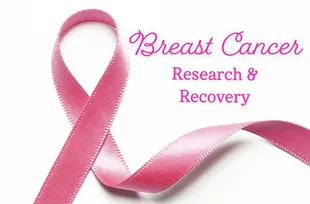Recovery
Breast Cancer Recovery
 The surgical treatments- lumpectomy and mastectomy are used to remove cancer from the breast. The removal of lymph nodes allows doctors to track the course of cancer.
The surgical treatments- lumpectomy and mastectomy are used to remove cancer from the breast. The removal of lymph nodes allows doctors to track the course of cancer.
The following are the most common breast cancer treatments: surgery, radiation, and chemotherapy.
- radiotherapy
- chemotherapy
- hormone replacement treatment
- therapy that is specific
You might receive one or more of these therapies. The type or combination of treatments you receive will be determined by how the cancer was discovered and where it is in its progression.
Breast cancer detected through routine screening may be in an early stage; however, breast cancer discovered after symptoms develop may be in a later stage and require a different therapy.
Breast cancer surgery recovery time
After a lumpectomy, most patients can return to their normal activities in 5–10 days.
Mastectomy: 3–4 weeks after surgery, people may feel like themselves again.
Adapting to life after primary breast cancer treatment can be tough.
Bras after breast cancer surgery
What bras should I wear after breast surgery for the first year and beyond?
It’s ideal to wear a bra with soft seams during the first year after breast surgery (such as a mastectomy or lumpectomy).
- a broad waistband (the band that goes under the cups and round your back)
- front and side panels that are deep
- cups are overflowing
- separation of cups (the centre of the bra between the cups should sit flat on your chest)
- Straps that are entirely adjustable
- No underwires, little detailing (the wires sewn in under each cup)
It might take up to twelve months for the area to recover following surgery, the nerves to heal, and any radiotherapy-induced skin abnormalities to go. During this period, your bra needs may vary due to weight gain or other treatment-related changes.
While the area recovers from surgery, it’s advised to avoid wearing an underwired bra because the underwires might be irritating.
 You may experience swelling following breast surgery at first. Find a bra which fits on the loosest hook so that it can be worn loosely at first and then tightened when the swelling subsides.
You may experience swelling following breast surgery at first. Find a bra which fits on the loosest hook so that it can be worn loosely at first and then tightened when the swelling subsides.
Choose bras with a high cotton content whenever possible. These will be kinder to your skin as it recovers, and they’ll keep you cooler if you’re having hot flashes.
Bra strap cushions can assist keep your bra in place by making the straps more comfortable on your shoulder. These are available at lingerie stores and on the internet.
You can wear less restrictive bras once the skin in the chest area has healed and settled down, which could take up to a year. If you wish to use a breast prosthesis, however, it should be well-fitting and have a full cup.
What is the best way to figure out my bra size after breast surgery?
Most specialty lingerie boutiques, as well as select high-street and department stores, offer professional bra fitters who will measure your exact bra size with a tape measure. Because your form and size may change during and after treatment, having your bra size carefully measured before purchasing new bras is a good idea.
A skilled bra fitter will frequently have specialized training and experience in assisting women who have had or are planning breast surgery. It’s a great idea to book ahead and schedule an appointment to ensure that you’ll be seen by a qualified fitter.
Taking care of side effects
Breast cancer and menopause
Chemotherapy, hormone (endocrine) therapy, and ovarian suppression (stopping the ovaries from acting permanently or temporarily) are all medications that might produce menopausal symptoms.
Some women find these symptoms tolerable, but for the majority, they are difficult to deal with and can have a negative impact on their quality of life.
Some treatments may trigger early menopause in premenopausal women, resulting in the symptoms listed below. Although certain therapies do not induce early menopause, they may produce the symptoms that accompany it.
Symptoms of menopause that are commonly experienced
The following are some of the most prevalent menopausal symptoms:
- Flushes that are extremely hot
- Sweats at night
- Dryness of the vaginal canal
- Changes in your orgasm experience
- Modifications to the sex drive
- Palpitations in the heart
- Mood swings
- Joint discomfort
- Skin and hair changes
- Gaining weight, especially around the waist
- Sleeping problems
- Problems with memory and focus
- Feeling agitated or anxious
- Underneath the skin, there is a crawling sensation.
Although the changes in your body may be gradual, symptoms in some women may appear suddenly.
Taking care of menopausal symptoms
Menopausal symptoms can be severe at times, affecting your quality of life significantly.
Your treatment options may be determined by the severity of your symptoms and the potential adverse effects of any therapy.
Night sweats and hot flushes
Learn about the causes of hot flushes and nocturnal sweats.
Dryness of the vaginal canal
In women who have had breast cancer therapy, vaginal dryness is a common and often bothersome symptom.
It can get worse if not treated, so it’s critical to seek care if you need it.
Infection can also cause vaginal dryness and irritation, so it’s better to see your doctor to rule that out.
Vaginal moisturizers and lubricants are among the therapies available to help alleviate vaginal dryness. These may be available on prescription from your doctor, or you can get them from a chemist or online.
Relaxation methods
Visualization (focused your mind to create images), distraction (focusing on objects around you), and yoga are some relaxation practices that some people find helpful in reducing tension and anxiety.
Mindfulness entails focusing on the present now — on yourself, your thoughts, and what’s going on around you – and can assist in preventing your mind from straying.
Breast cancer, intimacy, and sex
Hot flushes sweats at night, and vaginal dryness, as well as a decrease in sex drive, are all menopausal symptoms that can impair new and existing relationships, as well as your sex life.
It might be difficult or uncomfortable to address these issues with your treatment team or GP, but it can be beneficial to do so since they may be able to assist you.
Bladder issues
Bladder difficulties might include passing pee more frequently, getting a urinary tract infection (UTI), and incontinence in certain women.
Whether you get a burning sensation when passing urine or are passing little volumes of urine regularly, consult your doctor to discover if you have a urinary tract infection.
Exercises for the pelvic floor may aid bladder control. On the NHS website, you can learn how to practice pelvic floor exercises.
Putting on extra weight
Changes in weight, particularly around the waist, are common following cancer therapy and menopause. Long-term health necessitates maintaining a healthy weight.
There are numerous methods for avoiding weight gain and shedding any excess pounds.
More information on achieving a healthy weight can be obtained from your treatment team or GP, who can also refer you to a nutritionist if necessary.
